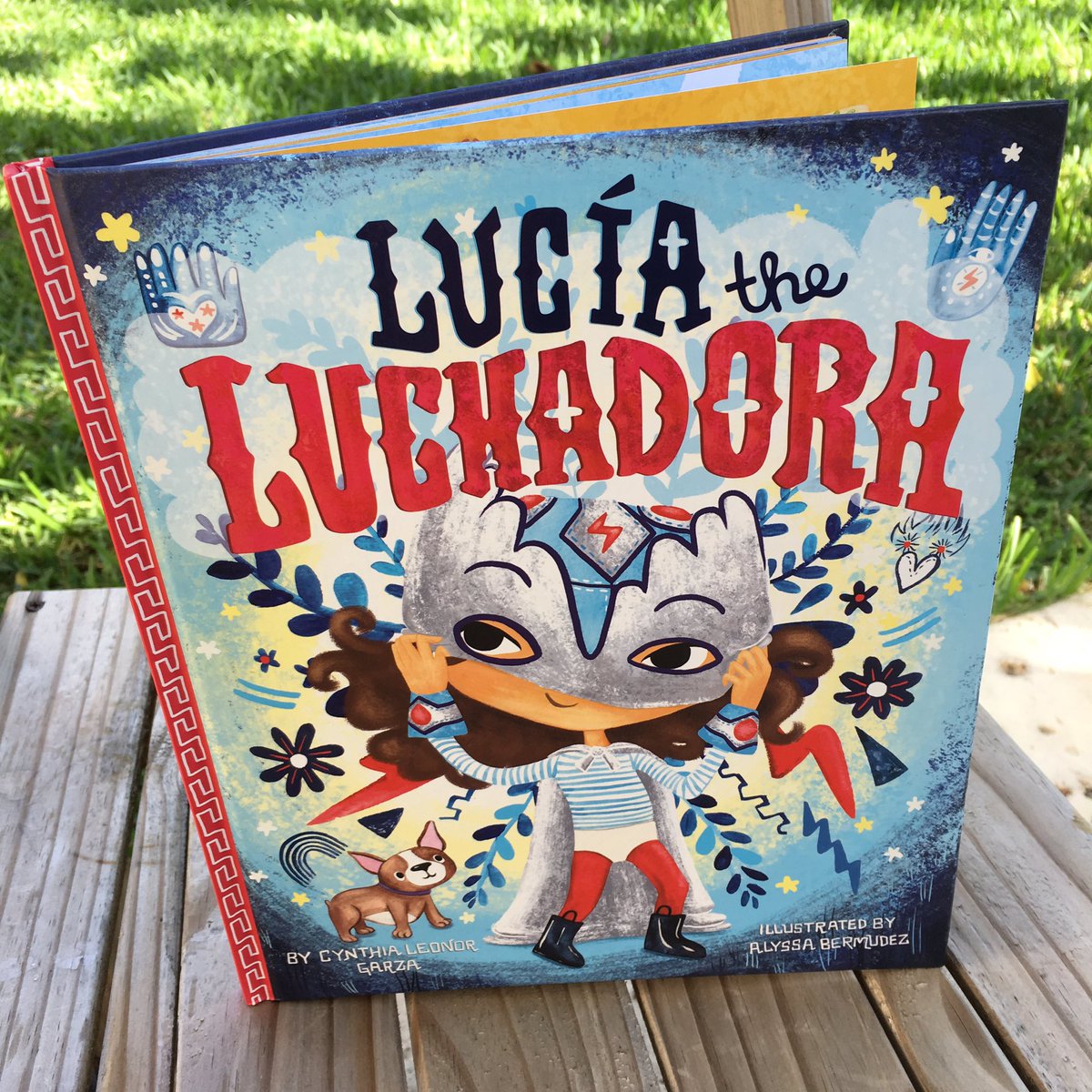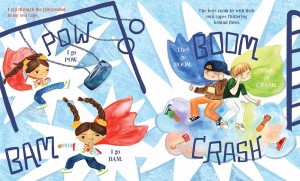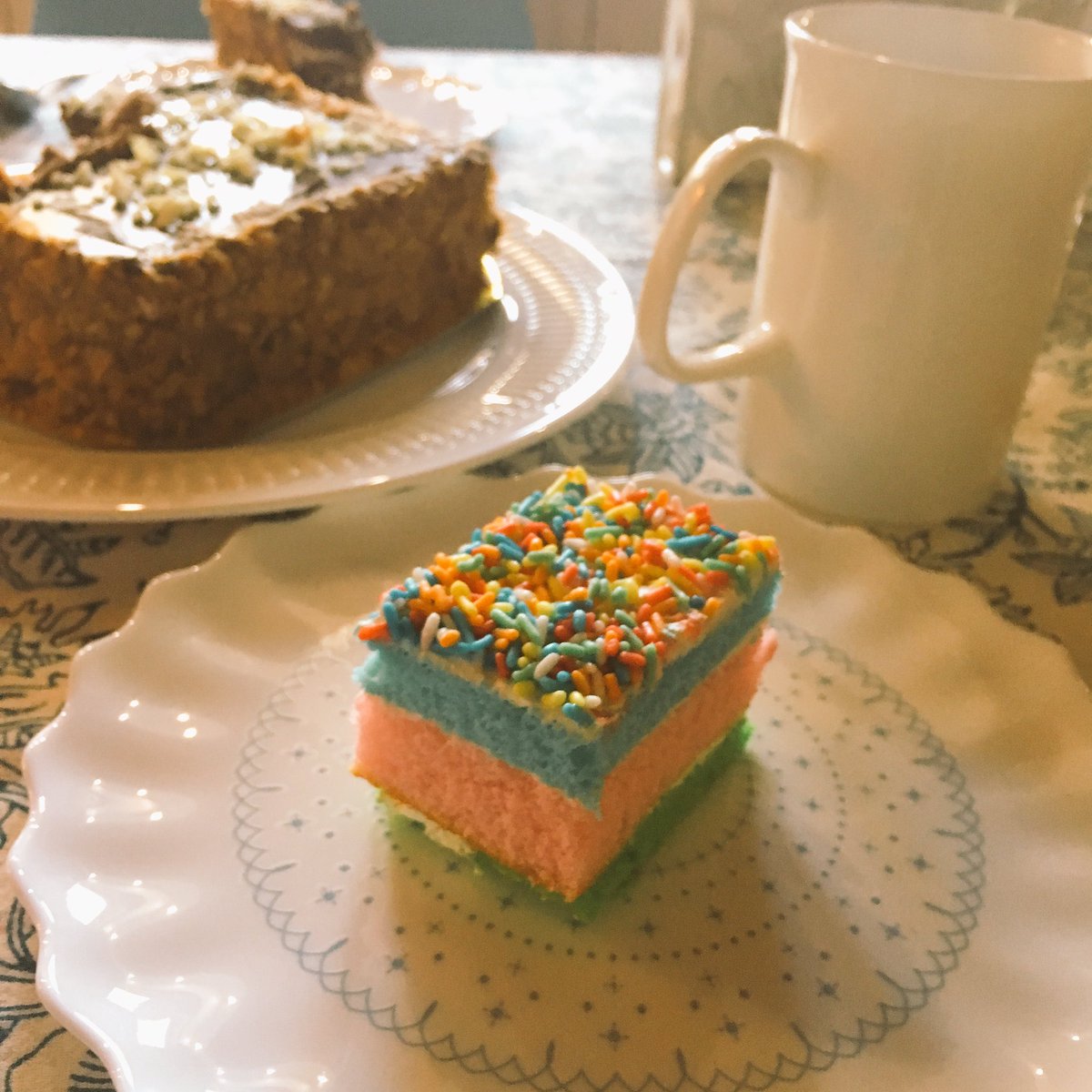Tell us about the inspiration behind Lucía and her story.
 I've wanted to write a lucha libre story for a long time, and my first attempt was a short story, then young adult, then middle grade. But none of those really captured the excitement and energy of lucha libre, which is just a spectacular and electrifying sport to watch, and I really wanted to see that on the page. Then a few years ago, I started writing picture books. One day, I was watching my daughter and niece running around in these superhero capes my sister-in-law had made for them. They were jumping off the couch and running through the house trying to make the cape flap behind them and it struck me that they were having so much fun being superheroes, and then it struck me that that this thought had struck me, because why shouldn't they be superheroes? Why do the boys get to wear the fun capes and girls get the princess costumes? I immediately knew that I had to write a story about a girl who wants to be a superhero, and lucha libre, with its masks and secret identities, was the perfect vehicle to tell this story.
I've wanted to write a lucha libre story for a long time, and my first attempt was a short story, then young adult, then middle grade. But none of those really captured the excitement and energy of lucha libre, which is just a spectacular and electrifying sport to watch, and I really wanted to see that on the page. Then a few years ago, I started writing picture books. One day, I was watching my daughter and niece running around in these superhero capes my sister-in-law had made for them. They were jumping off the couch and running through the house trying to make the cape flap behind them and it struck me that they were having so much fun being superheroes, and then it struck me that that this thought had struck me, because why shouldn't they be superheroes? Why do the boys get to wear the fun capes and girls get the princess costumes? I immediately knew that I had to write a story about a girl who wants to be a superhero, and lucha libre, with its masks and secret identities, was the perfect vehicle to tell this story.
Why did you choose to have a girl as the main character of this story?
Sometimes, when you write a story you just have the character show up and tell you their story. That's how it was with Lucía. Once I decided this would be a girl superhero, lucha libre story, she just came in and took over the story. She's a brave little girl, but she has doubts and fears and a spicy temper. We see her flaws, but we also see that she's got a huge heart and she isn't afraid to let it guide her. I think she's the sort of superhero children can see themselves becoming.
Although this story started out in my head as a girl superhero, lucha libre story, when it was all finished and I stepped back from it, I could also see that it's also very much about the power and potential that little girls have in them, and the role that mothers, grandmothers and other women have to encourage little girls to be brave and fearless.
Did you know that you wanted bullying to be an aspect of the story from the beginning?
I didn't set out to write a story about bullying – as a writer I'm thinking more about conflict – but I'm happy to see that this picture book can spark a conversation about taunting, which really is a precursor to more serious and systematic bullying.
Just a few months ago, I was at the playground at my daughter's school one afternoon when a young girl who was maybe 9 years old raced past me with fists balled up, chasing off a group of cackling boys. When her mother finally caught up to her, breathless, to see what was happening, the little girl burst out in tears and I could tell they were tears of anger and frustration as she tried to explain to her mother how she hated those stupid boys who were saying mean things to her. I really felt for this girl and her mother, who seemed at a loss for what to tell her daughter.
So, although I didn't set out to make a lesson of bullying in the book, as a parent I can say I definitely look to picture books to help me help my child make sense of the world. If there are any lessons to be drawn from the book, one might be how the everyday small situations can chip away at a girl's confidence. It's important for children to know early on that the words they use matter, but so do the actions they take. I hope that kids can feel just like Lucía: brave, full-of-heart, and unafraid to fight for what is right.
What is your experience with lucha libre?
I grew up along the border in South Texas, and you know, in these in-between spaces, there are so many things that are neither from here nor from there, but a wonderfully unique mix. My brothers used to be big WWF fans in the early nineties, but they also used to play with the little wood and rubber band lucha libre rings and plastic luchador action figures that my mother bought for them at the mercado when we'd cross over to Nuevo Laredo, Mexico.
I was always so captivated as a little girl by those play lucha libre rings and the masked wrestlers. I've also always been fascinated by the idea of masks and how they allow you to become someone else, someone better or worse than yourself, someone extraordinary. And in lucha libre, luchadores have always taken their masks very seriously, with some wrestlers never revealing their true identities to the public outside of the ring unless unmasked in a match. In many ways, luchadores really have transcended into real-life superheroes, especially the ones who have taken up social causes like fighting on behalf of children, women, and the poor.
In Mexico, luchadores are truly cultural icons. They're not just wrestlers who fight to lively story plots and have amazing acrobatic skills – although all that is incredibly cool to watch. There have been many luchadores who have become champions of the people.
Last year, I finally went to my first live lucha libre match at Arena México in Mexico City, and it was fist-pumping awesome. I sat behind a group of young women who were the rowdiest and most enthusiastic fans I've ever seen. I bought masks and capes for my two young daughters also a little wood and rubber band lucha libre ring and a few luchador action figures. Just the other day, my four-year-old was playing with it and asked me why I didn't have any luchadora action figures. Good question, my dear. Good question!
What do you know about the history of women in lucha libre?
Luchadoras have long been a part of lucha libre, although it's always been male-dominated sport. In fact, if you think of the big stars in the history of lucha libre – El Santo, Blue Demon Mil Máscaras, Perro Aguayo, Místico, etc.. – they are all men. Matches between luchadoras are usually prior to the main event where big-name luchadores fight. But Mexico's main lucha libre promotion company has a women's division and the women who compete are fierce fighters. lucha libre is a lot of theatrics, but it's still a very physically demanding sport, and these women who fight are seriously amazing.
Where would you recommend kids (or grown-ups) go if they want to learn more about lucha libre?
Watch lucha libre live, if possible! Tune in to find a match on Spanish-language television on the weekends, find clips on YouTube, go down Google rabbit holes. Buy a mask and a cape and put them on and feel what lucha libre is all about!
Honestly, I wish I could point to more great places to learn about lucha libre, but the truth is there aren't really a lot of books about this topic, as school librarian Betsy Bird pointed out recently in her review of Lucía the Luchadora that she wrote for her blog at the School Library Journal. She talked about the challenge as a librarian to give kids books and resources about this topic, because they just don't exist. I hope that publisher's take that to heart and give children the sorts of books they are craving. Grown-ups, too! I would love to see a primer on lucha libre, complete with history, the greats, how it's shifted over time, all of it A to Z. If someone doesn't write it soon, maybe I will.
Tell us about the beautiful artwork in the book.
 Alyssa Bermudez did an amazing job in bringing Lucía the Luchadora to vivid life. There is just so much attention to detail on the pages that really tell a much richer story about Lucía. Aside from all the wonderful Mexican folk art on the pages, I think my favorite details have to do with Abu, Lucía's grandmother. There's her perfume bottle and hair clip on her dresser, and then her wedding portrait on the endpapers. Those little details are just so endearing and personal and really bring an immense amount of warmth to the story.
Alyssa Bermudez did an amazing job in bringing Lucía the Luchadora to vivid life. There is just so much attention to detail on the pages that really tell a much richer story about Lucía. Aside from all the wonderful Mexican folk art on the pages, I think my favorite details have to do with Abu, Lucía's grandmother. There's her perfume bottle and hair clip on her dresser, and then her wedding portrait on the endpapers. Those little details are just so endearing and personal and really bring an immense amount of warmth to the story.
Tell us about the curriculum guide that Dr. Rebecca Palacios wrote.
 I knew I wanted this book to have a guide that could be given to teachers and librarians to give them ideas on how to use the book in the classroom, so when the book was close to the printing phase, I asked my friend and former colleague at the American Federation of Teachers Giselle Lundy-Ponce if she knew of anyone who might be a good fit to work on creating something for this book, and right away she said, "Of course! Dr. Rebecca Palacios!"
I knew I wanted this book to have a guide that could be given to teachers and librarians to give them ideas on how to use the book in the classroom, so when the book was close to the printing phase, I asked my friend and former colleague at the American Federation of Teachers Giselle Lundy-Ponce if she knew of anyone who might be a good fit to work on creating something for this book, and right away she said, "Of course! Dr. Rebecca Palacios!"
I'd met Dr. Palacios before, many years ago, and she is just amazing and a real champion of the classroom. We talked and she wrote up a fantastic curriculum guide. It's filled with questions, lessons, ideas, and conversation starters for the classroom. It can be used for younger and older students, and my favorite part is that it includes ways to use the book with students who are English-language learners.
What are your hopes for this book?
Well, first, I hope it's a book librarians can't keep on their shelves. I hope kids will ask for this book again and again and again.
Beyond that, if it makes kids laugh, or makes them feel empowered or want to throw on a cape and mask, or think about how the words we use and actions we take matter, then I can be happy about that, too.
You posted a picture on Twitter of breakfast birthday cake on the day the book was released. What kind of cake did you have? How did it feel to have your first children's book published?
 I had rainbow sprinkles cake for breakfast, which was fitting because it felt like such a magical moment that I thought unicorns might show up to help me celebrate. They didn't, and after breakfast it was actually a pretty anticlimactic day, or rather, just a regular weekday doing mundane things. I live in Nairobi, Kenya now so I didn't get the experience of going to a bookstore to buy a copy. And by the time America was waking up and friends were telling me they had finally gotten the book, I was already asleep! Getting the advance copy back in December was pretty special, though. The first time I held it in my arms felt as if I was holding my newest child. And I cried in the same way I did as when I first held my two daughters right after they were born. I was just so happy to finally meet Lucía.
I had rainbow sprinkles cake for breakfast, which was fitting because it felt like such a magical moment that I thought unicorns might show up to help me celebrate. They didn't, and after breakfast it was actually a pretty anticlimactic day, or rather, just a regular weekday doing mundane things. I live in Nairobi, Kenya now so I didn't get the experience of going to a bookstore to buy a copy. And by the time America was waking up and friends were telling me they had finally gotten the book, I was already asleep! Getting the advance copy back in December was pretty special, though. The first time I held it in my arms felt as if I was holding my newest child. And I cried in the same way I did as when I first held my two daughters right after they were born. I was just so happy to finally meet Lucía.
You are living in Nairobi right now. What took you there?
Yes, my family recently moved to Nairobi, Kenya, where my husband, Eyder Peralta, is based for his work as East Africa correspondent for NPR.
What are some of the opportunities you've discovered in raising your kids there?
Kenya is an extraordinary country with such a rich history, and so much more than lions and elephants and safaris. In fact, I've been here for three months and have yet to see a lion! That said, we do spend a lot of time outdoors. The equatorial sun is intense but the weather is always breezy and cool, and there is this deep, red Earth soil all around that seems to just beckon my children. It feels as if my kids have found this wonderful child freedom that I had never seen in them living in America. At the end of each day, they've run lots, played lots and have filthy feet, faces and dirty bottoms. But it seems the dirtier they are, the happier, and that's alright by me. It's a change from our former home in Washington, D.C., for sure, but we are loving every day of the adventure. For spring break, we visited the coast of Kenya and while at the beach, we happened upon a pair of camels sunbathing in the sand. As one of my friends reminded me on Facebook, “Dorothy, you are definitely not in Kansas anymore.”
What kinds of access to books do you have there?
I will just say that I really, really, really miss my local public library. Access to books here is limited, although I have found a few small bookstores that have a great selection of works by contemporary Kenyan and African writers, so that's exciting. Mostly, the bookstores I've come across stick to the classics and big international bestsellers. I bought a new Kindle before I moved here, so it's great that I can still access my grown-up books easily. Unfortunately, there just aren't many options for children's books in bookstores, and picture books (and graphic novels) really need to be held and pages turned to be fully appreciated. I've bought about a dozen children's picture books by East African writers since I moved here in January, and that's about the extent of what I've found anywhere. As I settle in to my new city, I hope to connect with other local children's writers in the area and with schools to work on helping them access quality children's books.
We need diverse books because…
...there are still too many good and worthy stories on the margins that deserve to be in the spotlight.
About the Author
 Cynthia Leonor Garza is a writer and journalist and has written essays for The Atlantic and commentaries for NPR’s All Things Considered. She is also an alum of the amazing VONA/Voices workshop and previously worked for the public affairs office of the American Federation of Teachers. She was born and raised in South Texas and now lives in Kenya with her family where her husband, Eyder Peralta, is based for his work as East Africa correspondent for NPR. Connect with Cynthia on Twitter or through her website.
Cynthia Leonor Garza is a writer and journalist and has written essays for The Atlantic and commentaries for NPR’s All Things Considered. She is also an alum of the amazing VONA/Voices workshop and previously worked for the public affairs office of the American Federation of Teachers. She was born and raised in South Texas and now lives in Kenya with her family where her husband, Eyder Peralta, is based for his work as East Africa correspondent for NPR. Connect with Cynthia on Twitter or through her website.








Add new comment